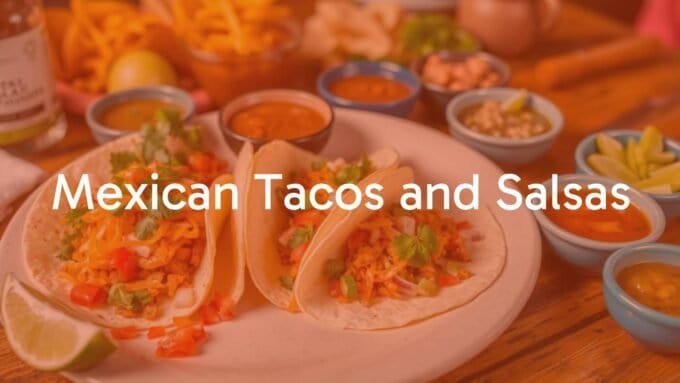Mexican cooking methods are more than just a set of recipes-they are part of a long tradition shaped by history and rooted in the native foods of the land. These techniques show how simple, fresh ingredients can become dishes full of flavor and texture. Mexican cooking focuses on getting the most out of every ingredient, often using ways of cooking that have stayed the same for hundreds, even thousands, of years. These are not just ways to make food; they are family customs, handed down through time, that add a special quality to Mexican food.
What Sets Mexican Cooking Techniques Apart?
How Do Ingredients Shape Cooking Methods in Mexico?
The foundation of Mexican cooking comes from local ingredients like corn, beans, and chilies. The way people first cooked with these foods shaped many cooking styles. Corn, for example, led to nixtamalization, a special process that makes corn easier to work with and gives it more nutrition. This is what lets people make fresh, soft tortillas instead of just boiling corn.

Fresh ingredients are very important. Foods like ripe tomatoes, avocados, and lime give Mexican dishes their bold taste and keep things bright and flavorful. Herbs such as cilantro and epazote, along with spices like cumin and chili powder, are used in careful ways to bring out their smells and tastes. These choices guide how dishes are cooked and the flavors they develop.
How Has History Influenced Mexican Cooking?
Mexican cooking goes back to ancient civilizations like the Maya and Aztecs. These groups created clever ways to cook without ovens, using open fires to grill, roast, and toast their food. This early way of cooking gives many Mexican foods their unique smokiness, still loved today.
When the Spanish arrived, they brought new foods such as meat and cheese. These were added to Mexican meals, but the main ways of cooking stayed the same. Old kitchen tools like the molcajete (stone mortar and pestle) and metate (grinding stone) are still used, connecting today’s cooks with the traditions of the past. Mexican food is a mix of old and new, with time-tested ways of cooking still playing a big part.
Common Mexican Cooking Methods
What Is Comal Cooking?
The comal is a flat, round griddle found in almost every Mexican kitchen. It was traditionally made from clay, though you’ll now find metal ones too. It’s heated on an open flame and is key for making tortillas, giving them a special flavor and a bit of char.

The comal isn’t just for tortillas-it’s also used for toasting spices, charring veggies for salsa, and cooking meat. With only a little oil and good heat, it creates deep flavors you can’t easily get another way. The comal is more than a tool-it’s a main part of Mexican meals.
Cooking with Clay Pots (Ollas de Barro)
Clay pots, known as “ollas de barro,” are important for slow cooking in Mexican homes. They hold heat and moisture well, making them perfect for stews like pozole and menudo or for making moles. The clay can even give the food a gentle, earthy taste.

Slow cooking in clay pots lets the flavors blend over time and makes meats and beans especially tender. It’s a style of cooking that values patience and care for the best results.
Cooking Over Open Fire
Open-fire cooking started because there weren’t ovens in early Mexican households. This way of cooking gives foods a tasty smoky flavor and continues today in grilling and roasting recipes.
- Barbacoa: Meat is steamed in a pit, often wrapped in leaves, creating juicy, smoky results.
- Grilling (like carne asada): Thin meats are cooked quickly over a flame, adding charred flavor.
These methods link modern cooking to its early roots in Mexico.
Popular Methods for Making Mexican Dishes
What Is Nixtamalization and Why Is It Important?
Nixtamalization is a very old, important process for cooking with corn. Dried corn kernels are soaked and cooked in water with lime (the mineral, not the fruit). This changes the corn so it can be ground into masa (dough) for tortillas and tamales.
| Benefit | Description |
|---|---|
| Nutrition | Boosts vitamins and minerals, making corn healthier to eat |
| Texture | Lets you make soft, flexible tortillas and tamales |
Making Handmade Tortillas
After nixtamalization, the corn is ground to make fresh masa. Small balls of dough are flattened by hand or in a tortilla press, then cooked on a hot comal. The tortilla is flipped after about 30-45 seconds and cooked again until it puffs up, which means it’s light and ready to eat. Handmade tortillas have a taste and feel that packaged ones can’t match.

Grilling vs. Roasting
- Grilling: Done quickly over high heat, adds smoky, charred flavor to meats (like carne asada).
- Roasting: Uses lower, slower heat for large cuts or vegetables, increases tenderness and depth (like for cochinita pibil or salsa vegetables).
Steaming (for Tamales and More)
Steaming cooks food gently, often in corn husks or banana leaves. Tamales are the most well-known, but meats like barbacoa are often steamed too. Steaming keeps the food moist and allows flavors to soak in deeply without needing extra fat.
Frying: For Crunchy Snacks and Sweets
Frying gives foods a crispy, golden crust. Many favorites like taquitos, chimichangas, and tostadas are made by frying. Desserts like churros are also fried and then rolled in cinnamon sugar. Frying brings a pleasing crunch and richer flavor to Mexican dishes.
Sautéing and Simmering for Salsas and Moles
Sautéing means cooking quickly in a bit of oil-garlic, onions, tomatoes, and chilies often go into the pan first for salsa or mole. Then simmering lets these ingredients cook slowly, so their flavors deepen and blend over time. This is a key step for rich sauces and tender meats in many Mexican meals.
Working with Chilies and Building Flavor
Preparing Different Chilies
- Fresh chilies (like jalapeños): Can be used raw, roasted, or charred to change their heat and taste.
- Dried chilies (like ancho or guajillo): Usually toasted and soaked to soften before blending into sauces.
Each kind of chili has its own taste, and how it is cooked changes its flavor and heat.
Toasting and Rehydrating
Toasting dried chilies and spices “wakes up” their flavors and gives sauces a fuller taste. Rehydrating, that is, soaking toasted chilies in hot water, makes them soft and easy to blend into salsas and moles. Lightly toasting whole spices before grinding also makes them more fragrant.
Marinating and Seasoning in Mexican Food
How Marinating Changes Texture and Flavor
Marinating adds both taste and tenderness, especially to tougher meats. Mexican marinades often mix lime or orange juice, garlic, chilies, and herbs. The acid in the juice softens meat fibers, while the flavors soak in. Letting meat sit in a marinade for a few hours, or overnight, means it will be both tasty and tender.
Broths, Adobos, and Dry Rubs
- Broths: Slow-cooked liquids using bones, vegetables, and spices; give deep flavor to soups and sauces.
- Adobo: Thick marinades or sauces made with dried chilies, vinegar, garlic, and spices; used for both marinating and cooking.
- Dry rubs: Mix of ground spices and herbs massaged into meat before it’s cooked, great for grilling or roasting.
Main Tools in Mexican Cooking
Molcajete: Traditional Mortar and Pestle
The molcajete, made from volcanic rock, is used to grind and mash ingredients by hand. This releases more flavors and gives salsas a chunky, rustic feel. Cooks place items like garlic, chilies, and herbs in the bowl and crush them with a stone pestle (the tejolote). It’s a prized tool in Mexican kitchens.

Metate for Grinding
The metate is a flat or slightly curved stone used with a rolling stone (mano) to grind corn into masa. Traditionally used daily in Mexican homes before the invention of electric mills, it’s still respected for creating masa with a uniquely smooth texture.
Modern Tools in Today’s Mexican Kitchens
- Blenders: Quickly puree sauces, but the texture is smoother than a molcajete’s results.
- Cast iron pans: Good for tortilla making and searing meat.
- Tortilla presses: Help shape tortillas quickly and evenly.
These tools help adapt traditional cooking to modern home kitchens, offering quicker and easier ways to prepare classic dishes.
Regional Differences in Mexican Cooking
| Region | Main Cooking Methods | Example Foods |
|---|---|---|
| Northern Mexico | Grilling, pit-roasting, dry rubs | Carne asada, barbacoa (beef and goat) |
| Central Mexico | Simmering, steaming, sauces | Mole, tamales, antojitos |
| Yucatán | Pit-roasting, citrus marinades, braising | Cochinita pibil, dishes with recado spice mixes |
| Coastal areas | Grilling, frying, acid marinating (ceviche) | Fish tacos, ceviche, grilled seafood |

Adapting Mexican Cooking at Home
How to Use Modern Appliances for Mexican Food
- Stews and moles can simmer slowly on the stove or in a slow cooker to let the flavors develop.
- To mimic pit-cooking like cochinita pibil or barbacoa, wrap marinated meat in banana leaves or foil and bake it at a low temperature in your oven.
- Cast iron pans can work for tortillas or for charring vegetables if you don’t have a comal.
- Broilers and grill pans can also give meat a charred finish indoors.
Tips for Making Regional Mexican Dishes at Home
- Use the freshest ingredients possible, especially for chiles, herbs, and masa harina.
- Try making fresh salsas with roasted or rehydrated chiles for bold, authentic flavor.
- Be patient with dishes that take time, like slow-cooked meats or moles.
- A molcajete can help you make the most flavorful salsa or guacamole.
With time and a bit of curiosity, home cooks can discover the wide variety of tastes and styles that make Mexican food special.














Leave a comment